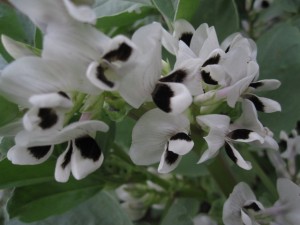The soft billowing boughs of May reach into June, the air is heady with scent from roses and Jasmine and the bees enjoy a rich nectar flow but with this comes a boom in pests and diseases. Soft leaves and unfolding buds feed colonies of sap suckers, leaf cutters, stem borers and a host of diseases whose spores invade through tiny pores in the leaves or directly through the soft leaf tissue causing spots, holes, brown patches, colourful pustules, etc…
The “web of life” is an amazing thing: the millions of bacteria in the soil release nutrients for plant growth, plants provide a balanced vegetarian diet for the larval stages of hundreds of insect species (caterpillars of butterflies through to the larvae of ladybirds and lacewings) as well as slugs and snails, all of which form a protein rich feast for birds raising their families – gardening in June, we are deeply entangled in the ‘web of life’.
Balance is life’s key word – a bit of good and a bit of bad with the trend these days being to tolerate a degree of damage. My broad beans have neat notches out of the edges of their leaves courtesy of the bean weevil, the leaves of my rocket plants are becoming increasingly pin pricked by the flea beetle, the slugs continue their assault, the sawfly is probably eyeing up my gooseberry bush, the pea moth my peas, the carrot fly my carrots and the white butterfly my Brassicas. As threatening as it sounds, no action from me would probably not result in a complete disaster. However I will put out bait for the slugs, barriers against the carrot fly and white butterfly and remain vigilant for aphids on new shoots of roses (although there are plenty of birds in the garden feeding their young).
A good way of extending the flowering season of some herbaceous plants is via the “Chelsea chop”. Do this in early June (if you forgot in late May), this takes courage but well worth the dilemma. Take the shears to half of your clumps of Asters, Phlox, Achillea, Helenium, tall daisies, Monarda, Solidago and Rudbekia, cutting them to half their height. On Sedums this technique creates more desirable compact clumps.
Whilst enjoying my garden this month, I will be making notes on what needs to be moved and split next autumn, of any new ideas I have with regards to new ‘must have’ plants, etc… (the clumps of geraniums have got out of proportion with the rest of the border and the catmint is swamping the box plant). I will be keeping on top of weeding, harvesting early crops of salads and broad beans, picking flowers for the house, making elderflower cordial and hopefully enjoying some sunshine (fingers crossed!)
Enjoy your garden too.
